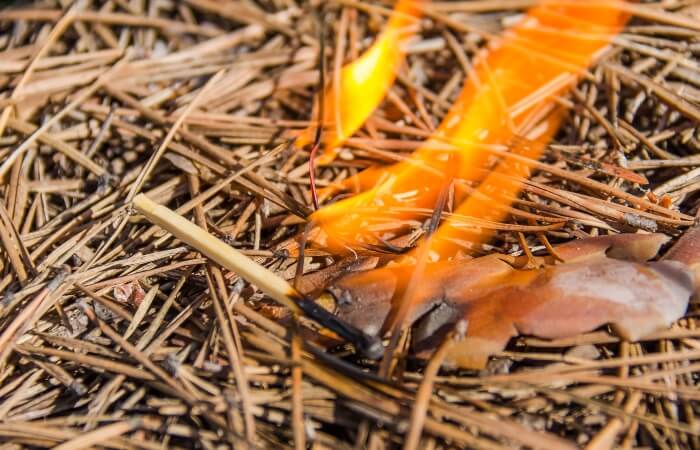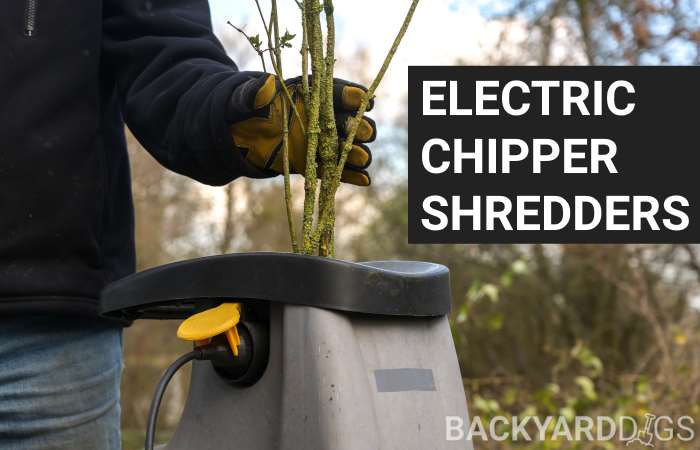If you’re thinking of bagging up and removing old mulch and putting it out for garbage collection, I want you first to consider other ways you can use it around your home.
I hope you try some of my suggestions on what to do with old mulch instead of throwing it away. Using old mulch can benefit your landscaping while helping the environment by keeping it out of your local landfill!

Things To Do With Old Mulch
Mulch can be organic, which means it consists of:
- Wood shavings
- Chunks of bark
- Cocoa husks
- Pine straw
- Nutshells
Or, mulch can be inorganic and made from:
- Shredded rubber tires
- Gravel or stone
For this list, I’ll focus on recycling old mulch made from organic materials but will give a suggestion or two for reusing inorganic mulch.
1. Reuse Faded Mulch As A Garden Bed Base
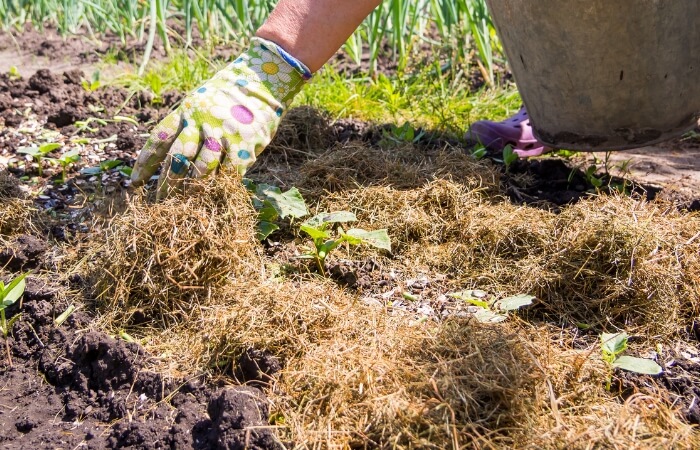
Old mulch can fade and make your landscape beds look dull, leading you to replace the material even though the mulch is still beneficial for weed reduction and soil protection.
You can safely reuse faded mulch if the material is still close to its original shape and consistency. The best thing to do is to rake through the old mulch to break apart any clumps, but leave it in place.
You can save an impressive amount of work and money by adding only an inch or so of new mulch over the old mulch, but the renewed color will instantly improve the beauty of your yard.
2. Use Old Mulch As A Soil Amendment
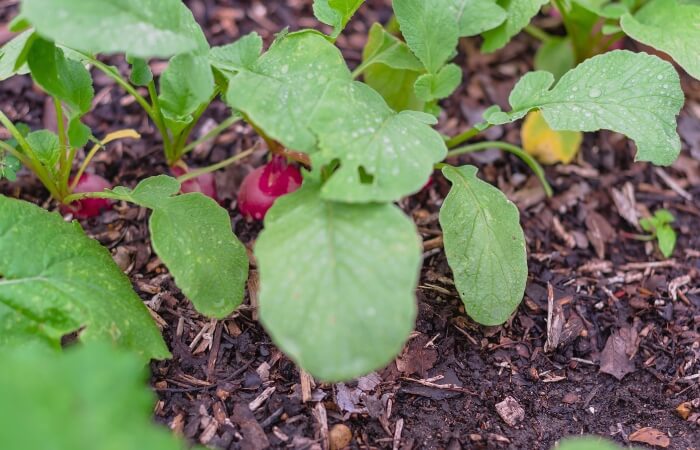
Old organic mulch that is crumbly and resembles the texture of potting soil is ideal for tilling into the ground, where you need more nutrients and moisture balance.
Decomposed mulch still offers micronutrients that help plants develop, and it can absorb and release moisture from the soil to stabilize overly dry or wet soil conditions.
If tilling large amounts of old mulch into a garden bed, it’s best also to incorporate compost. Woody mulches will continue to pull nitrogen from the soil as it breaks down, and the high nitrogen levels in compost will offset this reaction so plants don’t suffer.
3. Use Old Mulch For Walkways
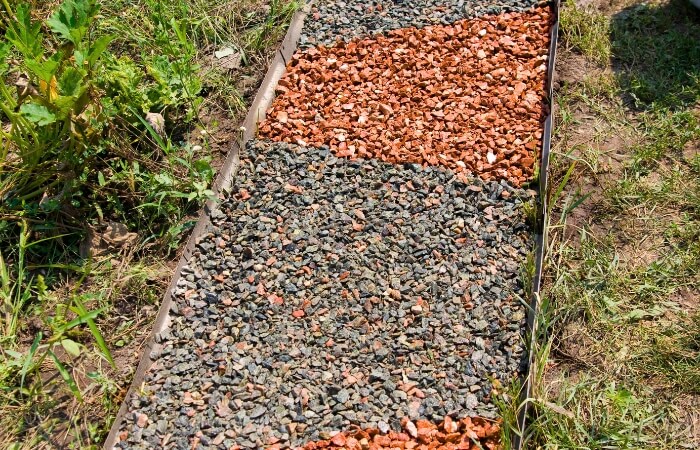
A great way to recycle old mulch is to spread it over dirt paths on your property or create natural-looking pathways that aren’t as harsh to the eye as concrete.
The mulch will add a buffer above the ground to keep feet drier after a rain, and it can help delineate the path by being easier to see versus bare ground or over grassy areas.
4. Add Old Mulch To The Compost Pile

You can easily compost old mulch and recycle any remaining nutrients left in the organic matter into new material that will help your garden grow.
Old mulch will be a carbon ingredient, which means you’ll mix it with green (nitrogen) materials when you add it to your composting system.
Any larger chunks of bark or wood in the mulch will take longer to break down, so you may need to sift out these particles after the compost completes and place them into your new pile or bin to finish decomposing.
5. Use Old Mulch To Protect Plant Roots During Winter
You can store your old mulch in bags or containers and use it in your garden beds before winter sets in to protect sensitive plant roots from the damage freezing temperature brings.
For plants that go dormant and lose their upper foliage, add a 4-5 inch layer of old mulch over the area. This layer of old mulch will act as a blanket to keep the warmth from the earth around plant roots and bulbs so they don’t die off.
Another bonus of using old mulch for plant protection is that it becomes a slow-release fertilizer as it continues to break down. So once spring thaws arrive and you rake away the mulch layer, plants will have an extra boost of nutrients left in the soil to help them sprout.
6. Spread Old Mulch Around Trees
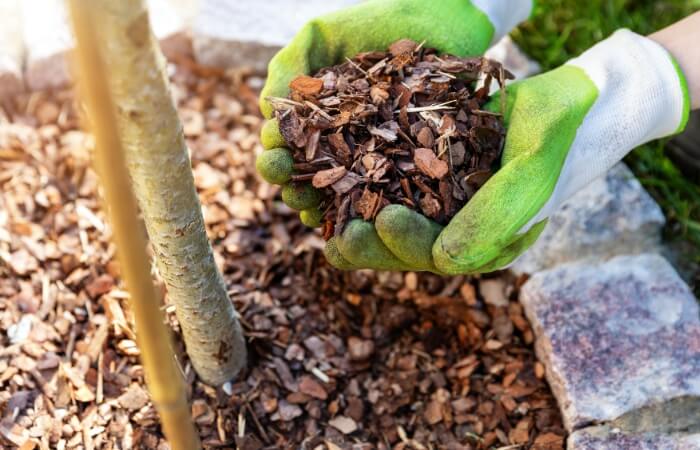
Sprinkling old mulch around your property’s trees benefits the root system. As woody mulch material breaks down, it slowly releases nitrogen, potassium, phosphorus, and other micronutrients. The trees can easily uptake this food to improve growth and health.
The mulch also will hold moisture on the soil around the trees, which will cool soil temperatures in the summer and warm them in the winter.
Applying old mulch as a surface treatment around trees will attract more beneficial soil microbes that help condition the soil as they feed, which decreases compaction and aids in drainage.
7. Use Old Mulch Between Garden Rows
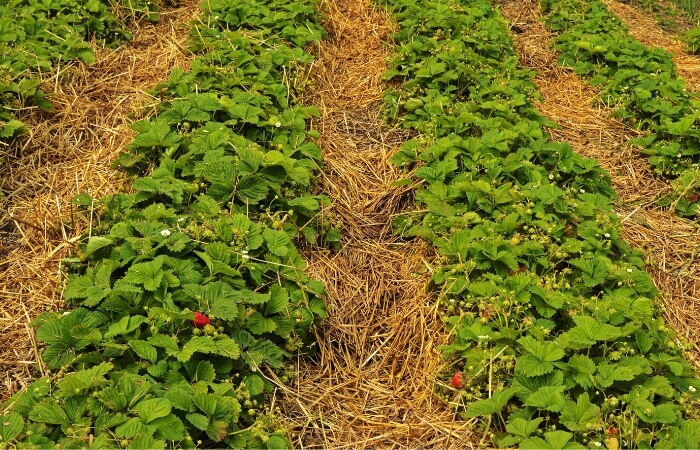
Laying down old mulch between rows in your garden beds can keep weeds and mud under control during the planting season.
As the mulch continues to disintegrate from the weather and being walked upon, it will be ready to be tilled into the soil before you start your next season’s crops.
Mixing the old mulch remains into the garden soil will add nutrients and encourage a healthy balance of microbes to take up residence, which will help the next batch of fruits, flowers, or vegetables to flourish.
8. Use Old Mulch As A Barrier to Reduce Yard Maintenance
You can use old organic or inorganic rubber or gravel mulch over areas of your yard where soil erosion is a problem. You can leave the old mulch on the surface or work it into the top few inches of the ground to help hold the dirt in place during rainstorms or heavy winds.
You can also collect old gravel mulch and use it over a weed barrier fabric to create a pathway or patio area. Because inorganic mulch won’t break down, it will provide years of carefree use in parts of your yard you need to be more functional.
9. Use Old Inorganic Mulch In Potted Plants To Promote Drainage
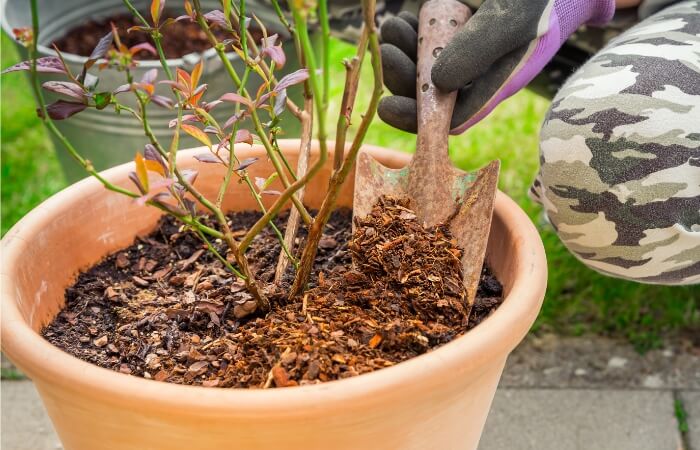
If you love to container garden and have lots of potted plants, you can use inorganic mulch at the base of pots to increase drainage.
You can also use it to fill up some of the space in large pots, so you don’t have to use or buy as much potting soil.
Rubber and gravel mulch is also heavier than soil, which can help prevent the pots from tipping over during windy storms as the plants grow tall.




